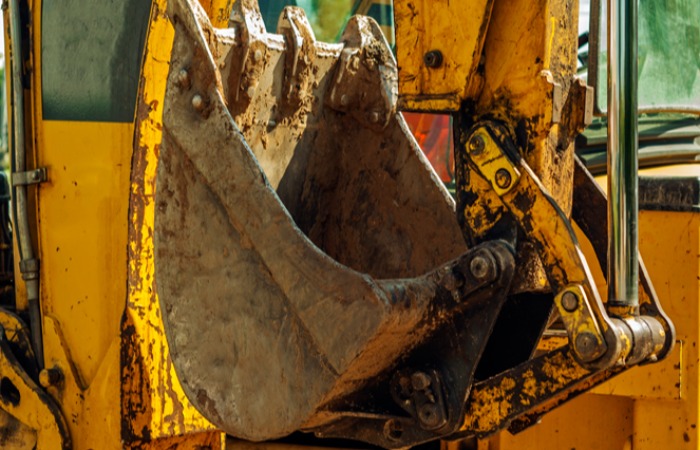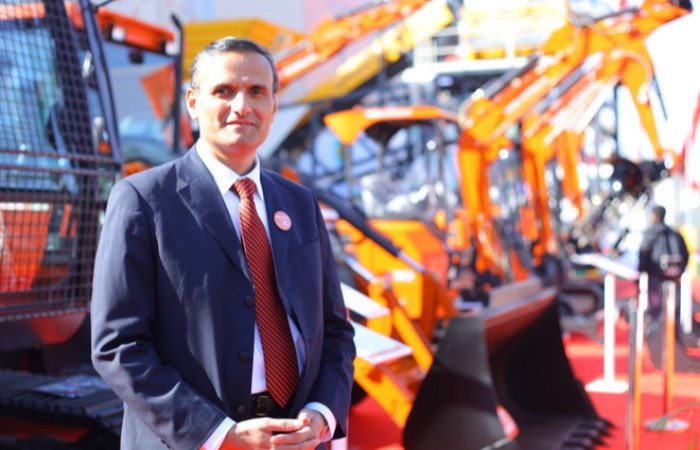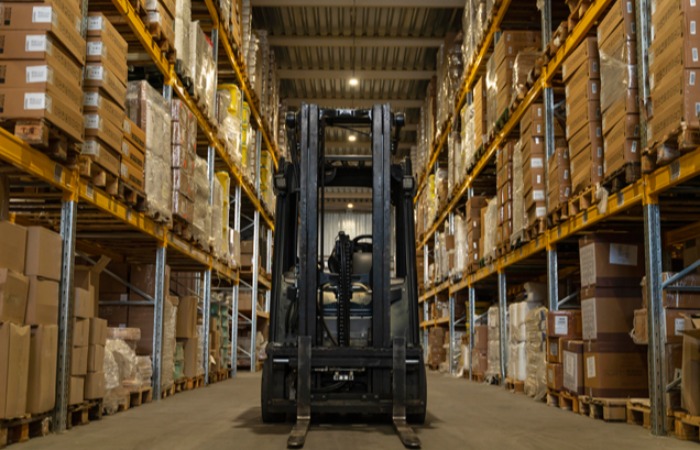The Unsung Game-Changers

In India’s rapidly transforming construction landscape, where speed, precision, and efficiency are essential, one key element is quietly but significantly reshaping the way infrastructure projects are executed — construction equipment attachments. Once seen as mere optional add-ons, these attachments have now become indispensable allies on job sites, revolutionising the capabilities of machines and redefining project execution strategies.
As the country accelerates towards ambitious goals — whether it’s the creation of smart cities, the expansion of the highway network, or the building of metros, airports, and housing projects — the role of mechanisation has become critical. The shift from labour-intensive practices to highly mechanised, multi-functional equipment is not just about bringing in bigger or more powerful machines. It is about making existing machines smarter, more flexible, and more productive through the intelligent use of attachments.

From manual to mechanised
For decades, India’s construction industry relied heavily on manual labour. Tasks such as excavation, material handling, concrete breaking, and earth compaction were labour-driven, slow, and prone to inefficiency. With the country’s growing population, rapid urbanisation, and massive government investment in infrastructure, this traditional approach is no longer sustainable.
Mechanisation was the first wave of transformation, bringing in equipment like excavators, backhoe loaders, skid steer loaders, bulldozers, and telehandlers. But the real game-changer is the versatility that attachments bring to these machines.
Today, an excavator is no longer just a digging tool. It can be quickly transformed into a hydraulic breaker, a grapple, a crusher, a compactor, or a drilling rig, depending on the task at hand. This adaptability reduces the need to mobilise multiple specialised machines to a project site, saving both time and cost.
India’s attachment market has seen tremendous growth, both in product diversity and in scale. Initially limited to basic buckets and breakers, the market now offers a wide range of sophisticated attachments such as crusher buckets, screening buckets, pulverisers, augers, drum cutters, and tiltrotators. The global construction equipment attachments market is experiencing rapid growth, driven by the need for increased versatility and operational efficiency. According to market research, the global market is projected to grow at a CAGR of over 5 per cent between 2024 and 2030.

The demand is fuelled by several factors:
Surging infrastructure projects: Roads, highways, metros, airports, and smart city initiatives are driving equipment utilisation.
Government investments: Heavy spending on public infrastructure is accelerating mechanisation.
Labour shortages and cost pressures: Rising labour costs and a shortage of skilled workers are pushing contractors to look for machine-driven solutions.
Tight project timelines: Attachments help contractors meet aggressive deadlines by enhancing machine productivity.
According to Sunil Newatia, Chairman and Managing Director, Suretech Infrastructure, “Growing urbanisation and industrialisation have significantly boosted the demand for machines like excavators, backhoe loaders, and skid steers, which directly drives the growth of the attachments market. Attachments not only allow these machines to perform tasks they otherwise couldn’t but also enable faster project execution. The government’s push for smart cities and large-scale infrastructure spending is propelling this growth even further.”
Domestic players such as Suretech Infrastructure, ACE, and JCB India, along with global giants like Caterpillar, Komatsu, Volvo CE, and MB Crusher, are actively competing in this space. Niche manufacturers are also entering the market with specialised attachments for demolition, road maintenance, forestry, and landscaping applications.
The power of versatility
Attachments can single-handedly multiply a machine’s functionality. This is especially important in India, where many contractors work with limited machine fleets and need each asset to perform as many tasks as possible.
Piero Guizzetti, CEO, MB Crusher India, explains: “Our product range is a complete ecosystem of complementary innovations including crusher buckes, screening buckets, shaft screeners, drum cutters, and sorting grapples. These are not just products; they are solutions meticulously engineered to fit excavators and backhoe loaders, providing outstanding performance and versatility.”
Highlighting MB Crusher’s success in India, Guizzetti says, “Our BF90.3 crusher bucket, first patented in 2001, is our flagship. It’s compact but incredibly powerful, turning inert material into valuable resources right on-site. With an output size that can be adjusted between 20 mm and 140 mm, it can handle heavy-duty tasks and is compatible with excavators over 21 tonne.”
MB Crusher’s MB-S18 screening bucket is another standout attachment. It significantly reduces crushing time, by up to 60 per cent, and allows for the on-site screening of materials like quarry residue, dry soil, and river stones. Its modular screening panels can be customised for different job site needs, from 10 x 10 mm up to 100 x 100 mm.
JCB India has also been leading the charge with its versatile telehandlers. Deepak Shetty, MD and CEO, JCB India, says, “Our telehandlers offer unmatched flexibility with attachments like shovels, heavy-duty forks, grabs, unloading rakes, crane hooks, jib cranes, grain buckets, man platforms, and drum handlers. These attachments, combined with JCB’s rugged engineering and operator safety, provide customers with exceptional productivity and reliability across diverse material handling applications.”
The practical benefits of attachments are evident across major projects in India. Consider a large commercial development in Mumbai. Traditionally, the contractor would have needed multiple machines for excavation, rock breaking, debris clearance, material handling, and soil compaction. Today, by using quick couplers and a suite of attachments, a single excavator can perform all these tasks, switching between a bucket, a hydraulic breaker, a grapple, and a compaction plate within minutes. This flexibility significantly reduces project costs, speeds up execution, and minimises machine idle time.

Moreover, attachments allow contractors to work in confined spaces, reduce the footprint of heavy machinery on sensitive sites, and handle complex tasks such as underwater rock breaking or high-reach demolition without the need for specialised, high-cost equipment.
One of the key innovations driving attachment adoption is the quick coupler system. Quick couplers allow operators to switch between attachments rapidly — sometimes in under a minute — without leaving the cab.
Depending on the setup, traditional attachment changes could take 30 minutes to two hours. Quick couplers reduce this to just a few minutes, minimising downtime, reducing operator fatigue, and increasing the equipment’s utilisation rate.
Modern machines now often come equipped with factory-fitted quick couplers, but older models can also be retrofitted. When choosing a coupler, it is critical to ensure it is lightweight yet made from high-strength materials to handle heavy-duty tasks safely.
Importance of operator skill
The adoption of attachments brings significant advantages, but these can only be fully realised when operators are properly trained. Understanding the operating limits, coupling procedures, maintenance needs, and safety guidelines of each attachment is crucial.
“At MB Crusher, our support doesn’t stop with the sale,” says Guizzetti. “We offer in-depth operator training and 24/7 customer support. Our dedicated service teams ensure that our clients can maximise equipment performance throughout the product’s lifecycle.”
Proper training can dramatically improve both productivity and safety. Attachments may have different pressure, flow, and weight requirements. Incorrect use can lead to equipment damage, reduced efficiency, or safety incidents.
Operators also need to be familiar with machine-specific features like load management systems, which may automatically adjust hydraulic flow based on the attachment in use. With the increasing sophistication of modern equipment, training is no longer optional — it is a necessity.
Like the base machines, attachments require regular maintenance to deliver peak performance and long service life. Basic practices include:
Following the manufacturer’s maintenance schedule.
Regularly inspecting hydraulic connections, hoses, and coupler mechanisms.
Keeping the attachment clean and properly lubricated.
Checking wear parts like crusher teeth, blades, or hammers for timely replacement.
Neglecting maintenance can lead to breakdowns, increased operating costs, and safety risks. Some modern attachments now feature smart sensors to track wear and signal when servicing is due, helping contractors stay on top of maintenance schedules.
The modern construction site uses a wide range of attachments that provide precision, efficiency, and safety. Here are some commonly used types:
Sweepers: Mechanical broom sweepers clear debris, control dust, and help keep construction sites clean and safe.
Buckets: Available in various sizes and shapes, buckets are designed for digging, trenching, and material handling with improved visibility and efficient dumping.
Quick couplers: Allow rapid attachment changes, increasing machine versatility and reducing downtime.
Forks: Ideal for moving pallets, shipping containers, and heavy loads across the job site.
Grapples: Used for handling irregularly shaped objects like logs, rocks, or demolition debris, with rotating options for added control.
Hammers/breakers: Hydraulic breakers are essential for rock breaking, concrete demolition, and tough excavation tasks.
Augers: Perfect for drilling holes for poles, foundations, or trees, augers save considerable time compared to manual digging.
Compaction plates: Provide efficient soil compaction in trenches, foundations, or roadbeds.
Each attachment is a productivity booster, but their true value is unlocked through correct pairing, operator skill, and regular upkeep.
The road ahead
As India’s infrastructure ambitions grow, the role of attachments will become even more critical. Market experts predict that the attachment sector will see double-digit growth over the next few years, driven by:
Increased rental of attachments as contractors seek flexibility without high capital investment.
Technological advancements like smart couplers, IoT-enabled attachments, and automation-ready tools.
A rising demand for eco-friendly attachments that reduce noise, vibration, and emissions.
Greater adoption of multi-functional machines in urban and space-constrained projects.
The construction ecosystem is moving towards smarter, faster, and more sustainable methods. Attachments will be central to this evolution, offering cost-effective, adaptable solutions for a wide variety of tasks.
Forward-thinking manufacturers are now developing lighter, stronger, and more energy-efficient attachments, as well as plug-and-play solutions compatible with multiple machines. Attachments are also expected to play a key role in the electrification of construction equipment, with new designs optimised for electric excavators and loaders.
The Indian construction industry is undergoing a paradigm shift. Attachments are no longer side accessories; they are front and centre in the quest for faster, safer, and more economical project execution. With their ability to transform a single machine into a multi-purpose workhorse, attachments are redefining construction workflows, reducing equipment fleets, and enhancing site productivity.
However, the full potential of these powerful tools can only be harnessed through proper training, quick coupler adoption, and stringent maintenance practices. As the industry continues to evolve, the companies that embrace the attachment-driven approach will lead the way in project efficiency, versatility, and long-term competitiveness.
The future of construction is not just about bigger machines — it's about smarter machines empowered by the right attachments.

 In India’s rapidly transforming construction landscape, where speed, precision, and efficiency are essential, one key element is quietly but significantly reshaping the way infrastructure projects are executed — construction equipment attachments. Once seen as mere optional add-ons, these attachments have now become indispensable allies on job sites, revolutionising the capabilities of machines and redefining project execution strategies.
In India’s rapidly transforming construction landscape, where speed, precision, and efficiency are essential, one key element is quietly but significantly reshaping the way infrastructure projects are executed — construction equipment attachments. Once seen as mere optional add-ons, these attachments have now become indispensable allies on job sites, revolutionising the capabilities of machines and redefining project execution strategies.









